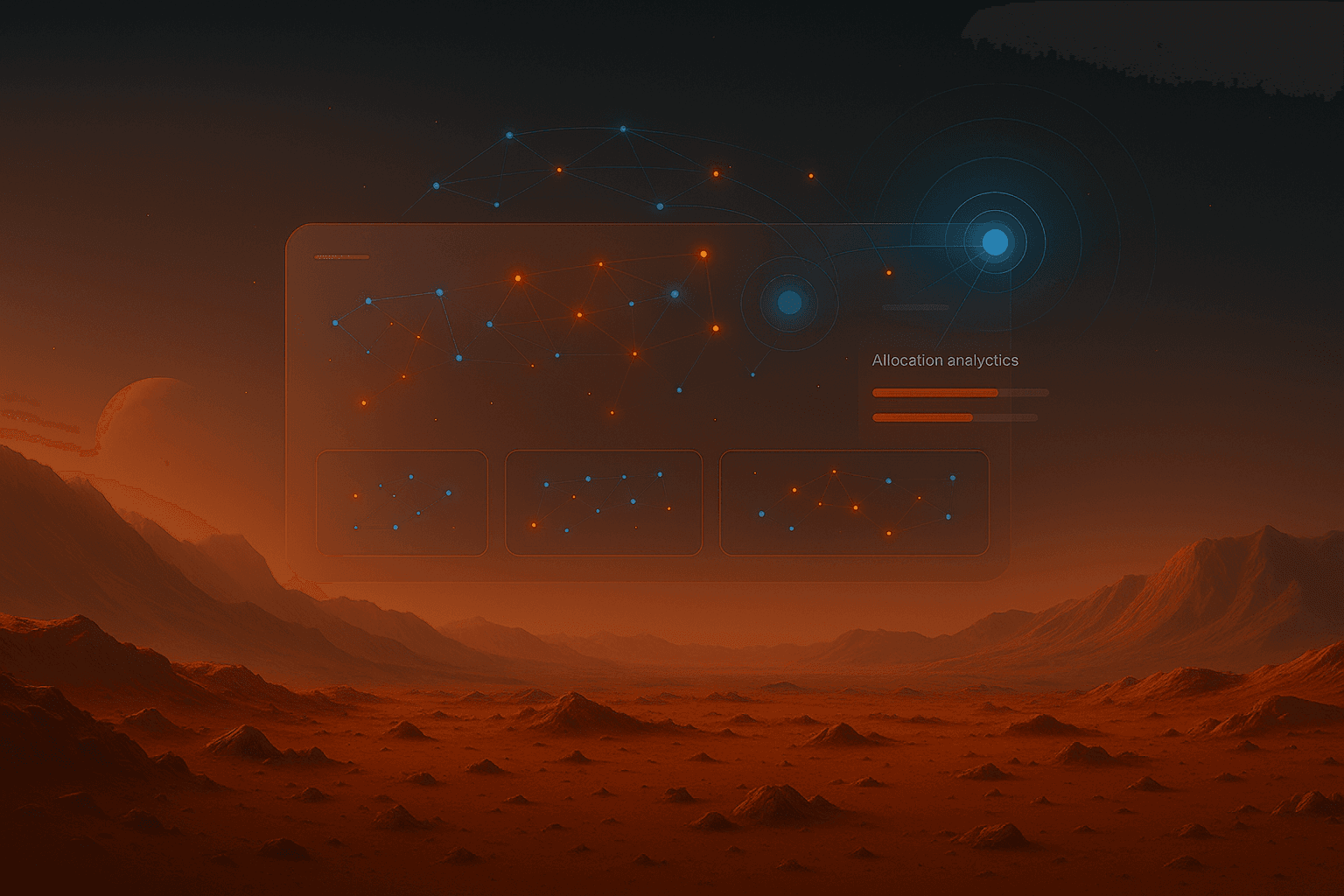Best RIA Database Platforms in 2025: Why Altss Outranks the Rest
Discover why Altss is the leading real-time RIA and LP intelligence platform for asset managers and investor relations professionals. Compare Altss to RIA Database, Discovery Data, and FINTRX—see how Altss delivers full market coverage, automated behavioral analytics, advisor relationship mapping, and compliance-grade transparency. Unlock strategic fund distribution with a modern, workflow-first solution built for 2025 and beyond.

Best RIA Database Platforms in 2025: Why Altss Outranks the Rest
Independent RIAs now steward multi-trillion pools of client capital. The industry set records for adviser count and assets in 2024, with 15,870 SEC-registered advisers serving 68.4 million clients and $144.6T in RAUM—up 12.6% year over year. That growth makes RIAs the most competitive, data-sensitive channel in wealth today.
The implication for IR teams is simple: generic lists no longer convert. You need firmographics (AUM, custodian, structure), behavioral intelligence (allocation activity, product usage), decision-maker insights (who actually drives a ticket), and distribution signals (moves, expansions, hiring, event presence) that tell you why to reach out now—and you need it with deliverability discipline and auditability.
Below, we assess three widely used platforms—RIA Database, Discovery Data, FINTRX—and then explain how Altss closes the gaps for teams that live or die by precise, timely engagement.
RIA Database — Breadth for campaigners, light on behavior
Best for: Broad segmentation and mass marketing into the RIA channel.
What it does well:
RIA Database claims coverage of 40,000+ RIA firms and 500,000+ advisor records with 200+ searchable fields (AUM, custodian, structure, and contacts). If your motion is campaign-driven (by geography, AUM tier, custodian), the filters are quick and familiar.
Where it struggles for 2025 IR:
Records skew static—you won’t get intent, allocation activity, or fund usage. There’s no behavior segmentation (e.g., who actually uses SMAs vs. model ETF portfolios vs. alts), no relationship mapping, and limited signals on advisor/job movement beyond periodic updates.
Bottom line: Excellent reach, limited read of who’s moving. Use it to size and slice the universe; don’t expect it to power timed, personalized campaigns.
Discovery Data — Compliance-friendly scale, less about “why now”
Best for: Firms that must enrich CRMs across multiple channels (RIAs, broker-dealers, insurance) with a regulatory spine.
What it does well:
Discovery Data (within ISS Market Intelligence) markets millions of financial-professional records inclusive of RIAs/BDs/insurance; coverage is refreshed against filings, and it’s known for exports and CRM interoperability. Several sources describe ~2M+ professionals and weekly tracking of rep movement, underscoring breadth and cadence.
Bottom line: Strong compliance enrichment and multi-channel spine; less useful when your quarter depends on behavioral targeting and timed outreach into RIAs.
FINTRX — Behavioral tilt and alerts, with caveats
Best for: Precision targeting when you want RIA + family office coverage plus some behavioral/product-usage context.
What it does well:
FINTRX promotes deep data across 40,000+ RIAs and 700k+ professionals, along with family-office intelligence. Its content highlights allocation tracking (SMAs, ETFs, alts), real-time alerts (advisor moves, firm expansions), and workflow tools (custom lists, CRM hooks). It also publishes counts such as 850k+ private-wealth & advisor records and 4,000+ family offices.
Where teams push back:
Public user feedback (e.g., G2) cites accuracy concerns, steep learning curves, and contract rigidity—themes to diligence in your buying process. Don’t take a single review as gospel, but do test your own targets for freshness and fit.
Bottom line: A more behavior-aware option than legacy directories. Usability, accuracy on your segment, and contract terms are the gating factors—validate with a live sprint.
Why Altss sets a new standard for advisor distribution intelligence
Most platforms stop at “who exists.” Altss is engineered to tell you who’s moving, why now, and how to reach them—with the compliance posture sophisticated firms now expect.
1) End-to-end visibility (RIA + FO + institutional LPs)
Altss unifies data on U.S. RIAs and private wealth allocators (family offices, institutional LPs). That matters because many advisor platforms miss the private-wealth entities who can co-lead alts allocations, co-invest, or green-light new products.
2) Automated, near-real-time signals
Rather than quarterly “batch” refreshes, Altss ingests OSINT streams and expresses change as Signal Timelines: advisor/team moves, acquisitions, product usage shifts, and event presence. No more guessing; you see what changed before you write the opener.
3) Verified contactability with deliverability discipline
Altss runs multi-provider verification and bounce-testing on decision-maker channels and maintains a ≤30-day re-verification standard. Teams that follow warm-up and frequency best practices commonly see high-90s deliverability—critical as inboxes harden. (No platform can guarantee zero bounces; behavior matters.)
4) Behavioral & allocation analytics
Altss isolates funding trends (SMA vs. ETF vs. private-credit/alt exposures) and aggregates distribution signals (custodian platform presence, model shifts, gatekeeper changes) so you can prioritize where the product story actually resonates.
5) Relationship intelligence (Q4 2025)
A Relationship Graph—paired with Warm-Path discovery and Events Radar—surfaces alumni ties, shared boards, and likely intro paths, turning “network” into a repeatable, documented workflow instead of lore.
6) Compliance-first governance
Altss is intentionally opinionated: no raw CSV/API exports, selective client screening, and clear separation of business vs. personal PII. You get evidence you can cite—with timestamps and source lineage—without creating an uncontrolled data-egress problem. In diligence, that posture is a green flag.
7) Workflow without the swivel
You can create thesis-based shortlists, attach two live signals per target, and generate a 90-second opener that passes the sniff test with a principal. For teams that still need CRM context, Altss supports workflow bridges (task links, notes, calendar hooks) while keeping raw PII inside the platform. (Enterprise connectors are explored within a no-bulk-export framework.)
Where Altss is not trying to be everything: if you need decades of institutional benchmarking across public plans/endowments, you’ll still layer a research almanac. Altss is the signals and conversion layer—the part that shrinks time-to-meeting.
What to test before you buy (practitioner checklist)
- Timing, not just search. Ask vendors to pull 10 named RIA targets and show what changed in the last 60 days—in product. If the answer is “we can export a list,” you’re buying latency.
- Verification chain. Have them explain how emails/phones are verified and how often they’re re-checked; ask what happens to a record after a bounce.
- Behavioral depth. Look for product-usage cues (SMA vs. ETF vs. alt allocation), platform availability, custodian shifts, and model portfolio changes.
- Governance posture. Evaluate PII handling, export controls, and audit trails. The right answer here speeds compliance sign-off.
- Sprint ROI. Run a two-week pilot: 40 targets → two signals each → 90-second openers → sensible cadence. Judge tools on meetings booked, not dashboards.
How to deploy in 30 days—and prove it worked
Week 1 — Fit and filters
Define thesis lanes (e.g., private credit distribution, alt sleeves on major custodians, SMA-to-fund migration). Build a 40–60 account shortlist with high Fit & Timing inside Altss.
Week 2 — Evidence-led openers
For each target, cite two live signals (team move, model change, platform listing, event presence). Send a 90-second opener: why them, why now, your edge, one clear next step.
Week 3 — Trim and fortify
Track replies, objections, and non-converting segments. Add one-pagers that explain operator math (fee/ops, trading, platform constraints). Prune quickly.
Week 4 — Convert signal to meetings
Align follow-ups to events/committee windows. Provide a two-page quarterly snapshot (Page 1 facts: flows, pipeline, risks; Page 2 narrative: what changed, what you did, what you need—platform pre-clear, allocation window, intro).
KPIs that matter
- ≥25% first-meeting rate on qualified targets
- High single- to low double-digit reply rates on evidence-led openers
- Shorter diligence cycles because your data lineage and PII answers are crisp
Quick platform recap (plain-English takeaways)
- RIA Database: Great for breadth and slicing the universe (40k+ firms; 500k+ contacts; 200+ fields). Use it to size campaigns; expect to add your own behavioral timing.
- Discovery Data: Strong regulatory spine and CRM exports at scale across RIAs/BD/insurance; lighter on product usage and intent; some users note UI slowness.
- FINTRX: More behavior-aware and alert-driven with FO scope; diligence accuracy, usability, and terms on your target.
- Altss: Built for signals, deliverability, and compliant workflow. It shows who’s moving, why now, and how to reach them—and it does it without creating an export/PII headache.
Related articles

The Top 10 Independent RIAs in Chicago (2025)
Ranked guide to Chicago’s top independent RIAs in 2025—their AUM, client focus, and alternatives tilt—and how Altss OSINT flags active allocators.

Top Independent RIAs in Los Angeles – Altss 2025 Deep Dive
A deep dive into the top independent RIAs headquartered in Los Angeles, with verified AUM, OSINT allocator signals, and insights on why these firms matter for fundraisers and institutional LP targeting.